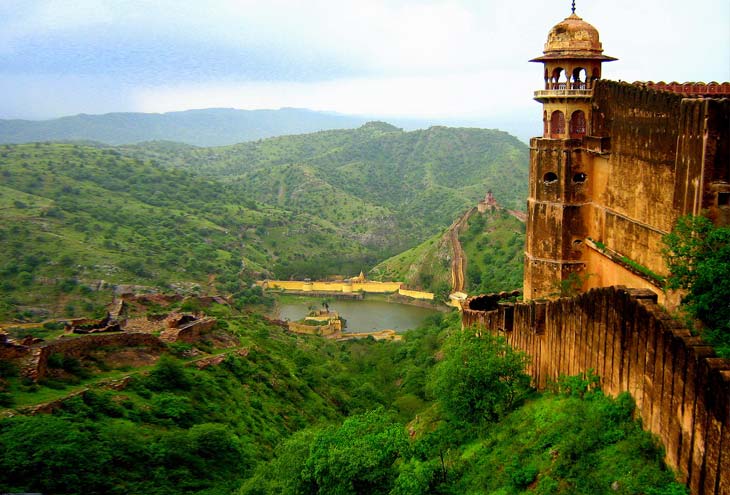Why Jaigarh Fort deserves a spot on your Jaipur itinerary

Perched high on Cheel ka Teela (“Hill of Eagles”) in the Aravalli range, Jaigarh Fort watches over Amber like a seasoned sentinel. Built to protect the royal citadel below, it’s less opulent than City Palace and less crowded than Amber Fort—yet its rugged ramparts, ingenious waterworks, and sweeping views are unforgettable. If you like forts that feel lived-in and strategic rather than purely ceremonial, this one’s your jam.
A quick history download
- Founding vision: Commissioned by the Kachwaha rulers (commonly attributed to Maharaja Sawai Jai Singh II) as a military outpost for Amber.
- Role: Safeguarded the Jaigarh treasury and the routes around Amber.
- Engineering edge: Celebrated for its water-harvesting system—a network of catchments, channels, and stepwells designed to sustain the garrison through long sieges.
- Myth & might: Home to the Jaivana—often cited among the world’s largest wheeled cannons of its era—symbolizing the fort’s deterrent power more than battlefield use.
Architecture & what to look for
- The Ramparts: Long, walkable walls ribboning across the ridgeline. Come for sunrise or late afternoon for soft light and long shadows.
- Jaivana Cannon: A must-see for scale and craftsmanship. The platform offers panoramic shots of Maota Lake and Amber Fort below.
- Laxmi Vilas & Lalit Mandir: Residential quarters showcasing a quieter side of royal military life—jharokhas, courtyards, and airy pavilions.
- Armoury & Museum Corners: Displays of arms, maps, and artifacts that bring the fort’s strategic story to life.
- Subterranean Passages: Historic links between Jaigarh and Amber Fort remind you these weren’t isolated monuments, but an integrated defense.
The view game: best photo spots
- Jaivana platform: Framing Amber Fort with Maota Lake—classic Jaipur postcard.
- Southern ramparts: For ridge-line panoramas and textured wall shots.
- North-east bastions: Golden hour silhouettes with the Aravallis rolling away.
Pro tip: Bring a polarizer for haze, and a short telephoto (70–100mm) to compress the fort-lake-palace layers.
Planning your visit
- Where: Amer (Amber), about 10–12 km from Jaipur city center.
- How long: 2–3 hours to explore at an easy pace; combine with Amber Fort or Nahargarh.
- Best time of year: October–March (pleasant days, crisp views).
- Best time of day: Early morning (cooler, emptier) or late afternoon to sunset (golden light).
Timings and ticket prices can change; check locally or on official tourism listings right before you go.
Getting there
- By car / taxi: The most convenient—there’s parking near the entrance.
- From Amber Fort: A short uphill drive; autos/jeeps are readily available.
- Public transport: City buses run toward Amer; switch to a local auto/jeep for the final climb.
Mobility note: Expect steep ramps, uneven stone, and long walks along the battlements. Comfortable shoes are essential.
Eat & drink nearby
- Cafés in Amer village for chai and light bites post-visit.
- Pack a water bottle—shade can be scarce along the walls.
Nearby attractions (easy combos)
- Amber Fort & Palace: The jewel below Jaigarh; allow half a day.
- Panna Meena ka Kund: Symmetrical stepwell; great for geometry photos.
- Nahargarh Fort: Another ridge-top fort with sunset views over Jaipur.
- Jal Mahal: Lake-palace pit-stop on the way back to town.